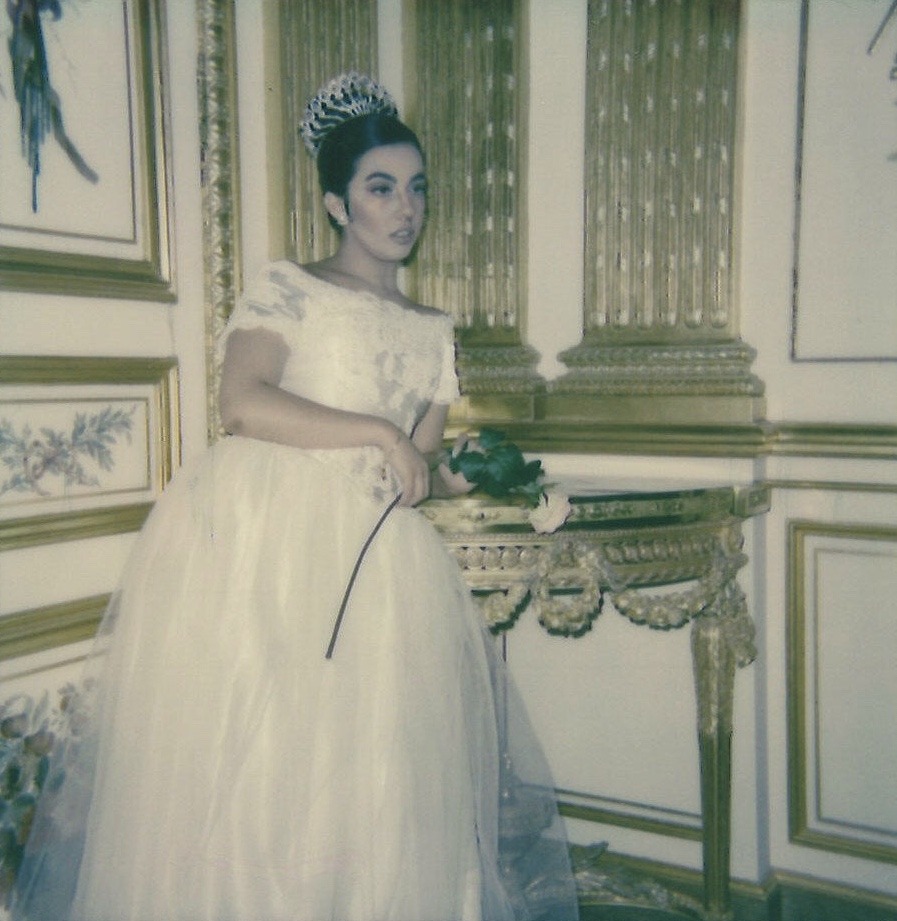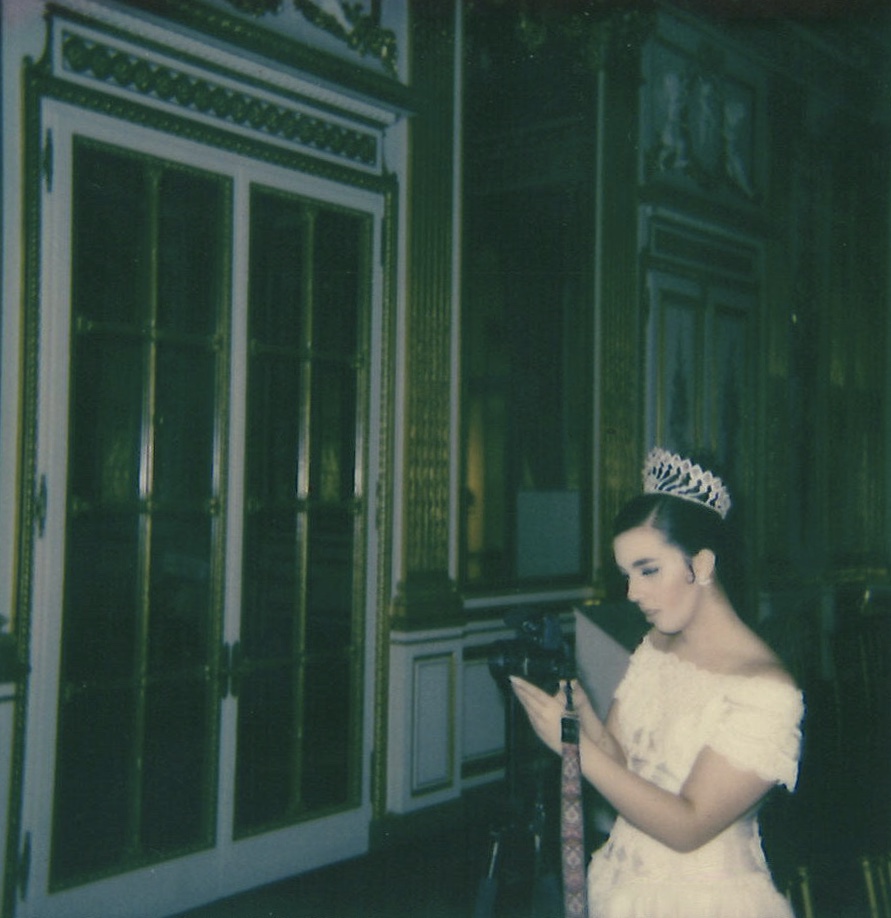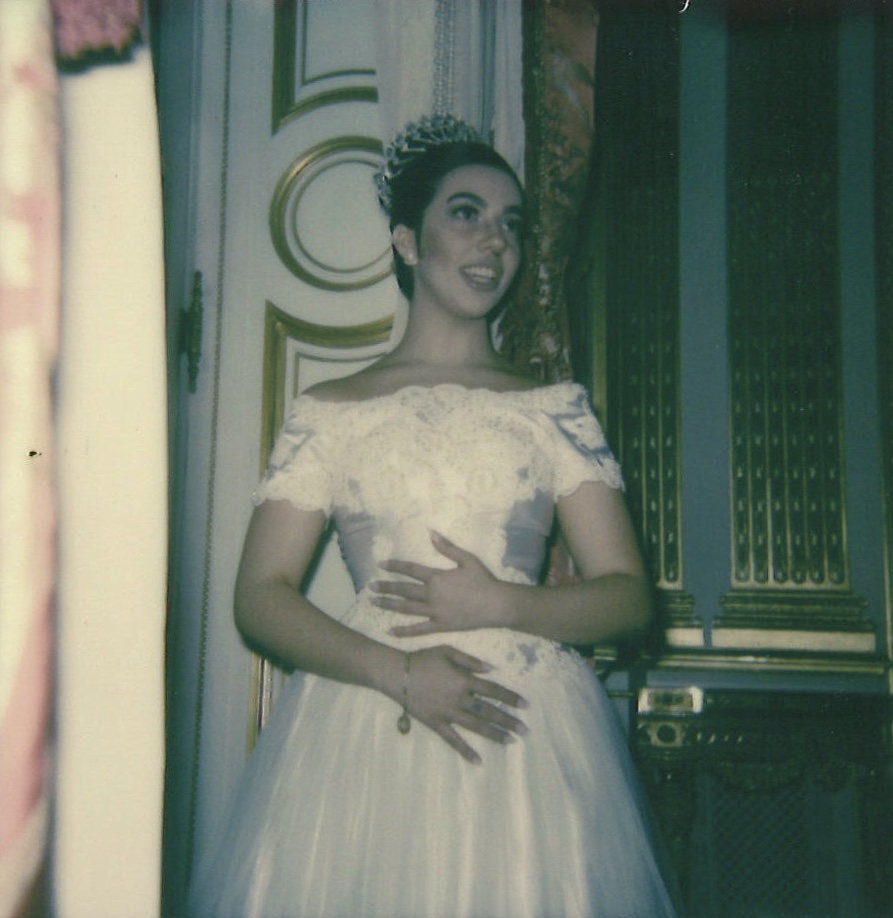Ashley Llanes’ self-portraits will be on view today at the Human Rights Campaign headquarters.
Photographer Ashley Llanes abhorred the idea of a Quinceañera, but eight years later it became the inspiration to her thesis project. Polaroids by Maxwell Young
La Quinceañera—a coming of age celebration in Latin American culture when a young woman turns fifteen, transitioning to a mujercita. The extravagant ball along with the pomp-and-circumstance is akin to Judaism’s Bat Mitzvah ceremonies, except closely aligned with Catholicism.
Eight years ago, Ashley Llanes rejected her Quinceañera opportunity. A Cuban-American growing up in Miami, Florida, she was surrounded by the tradition and the lineage of women in her family who embarked on the ceremony. Portraits of her mother, grandmother, and great grandmother adorned her living room while her older sisters, who each elected to have Quinceañeras, memorialized their rite of passages, too. Through the task of being a mujercita, there are cultural and gender expectations that Llanes felt misrepresented herself. Wearing makeup and shaving was counter to the girl with the pixie haircut, challenging stereotypes.
“I wasn’t interested in conserving my culture,” the Corcoran School of the Arts and Design alumnus reflected back to her 15-year-old self.
At 23-years-old, however, the D.C.-based photographer has made peace with her “punk-ass” adolescence, and her self-portrait series, La Quinceañera, is a retrospective take on the aesthetics of the tradition. “Now is when I’ve been able to appreciate the tradition and the actual priviledge,” her hindsight is 20-20. “You don’t do this unless you want to look back at your ancestors and say, ‘They did this. Why not me?’”
Personifying the conservative ideals of the celebration and the femininity her parents wanted to see, Llanes’ portraits emulate stereotypical Quinceañera photoshoots. There’s the casual beach shoot and the studio shoot, everything mindful of the cultural notions. I stopped by one of these photoshoots in February to find her hair slicked in a bun, secured by a plentitude of bobby-pins and an encrusted tiara that accentuated her cinderella dress—she was quintessential Quince.
“I shaved everything for this. I became hyper aware of body hair, which was such a weird thing, and for months because I did this project for a year,” Llanes spoke to the vulnerability in the level of vanity she forced herself to maintain; a type of method acting she endured as she considers each of her self portraits performance pieces. “It was torturous because I subscribed to this character for so long.”
Relieved to return to her edginess, septum piercing and all, there is a stark contrast between the Ashley we see in the images and the Ashley who will share her work today at the Human Rights Campaign headquarters for The Latino GLBT History Project’s Voices of Pride exhibition. Come and view her series and stay for the artist talk to learn more about her work with identity.




